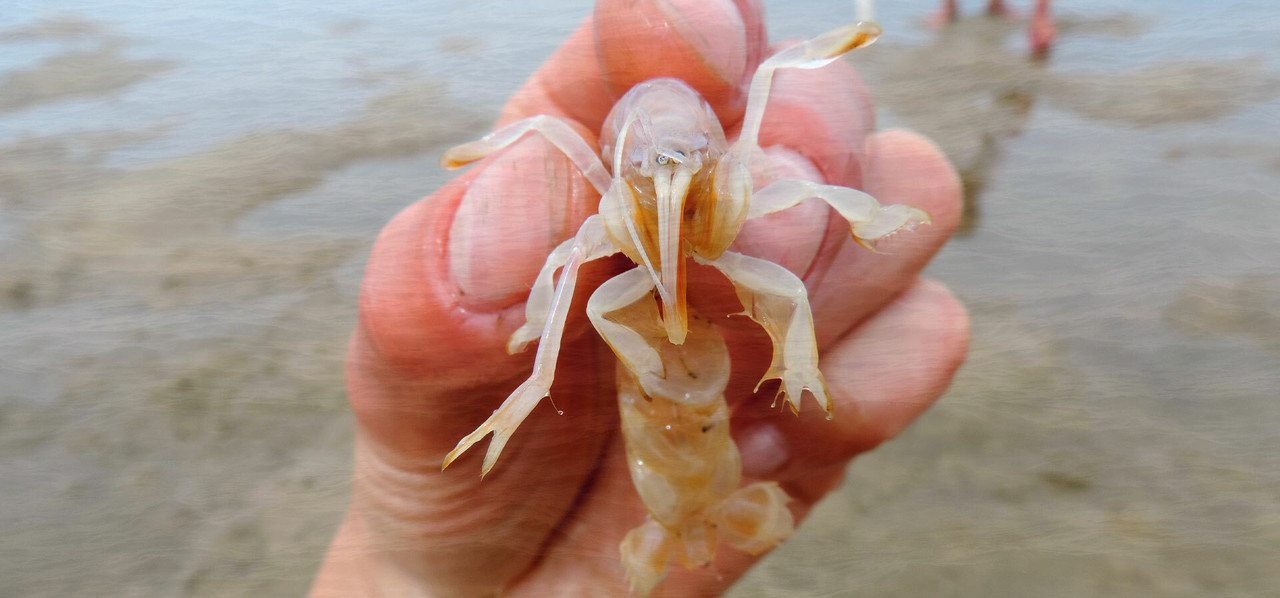A Tackle Shop Guide to Bait Catching & Gathering
This category covers a lot of ground, from bait pumps for yabbies to traps and nets. Choosing the right gear depends entirely on what you're chasing and where you're fishing. This guide will break down the main types of bait gathering equipment we sell to help you choose the right equipment.
A Note From Our Local Experts
"A lot of anglers would agree that live bait works! Is it the 'best'? In my opinion, not always—the enticing action of a modern fishing lure can be hard to beat. But fresh, live bait has, and always will have, advantages, especially when the bite is tough.
I’m a huge fan of using live nippers in the Lake Illawarra, Minnamurra, and Shoalhaven rivers when I feel like a break from using lures. I'll take my 30-inch Wilson bait pump down to the flats at Crooked River in Gerroa to pump a few, and they’ll get smashed by bream, whiting, and flathead. Bait wise, there's just nothing more effective than presenting a fish with what it's naturally feeding on."
- Ben Czulowski, Owner, Fishing Tackle Shop (Ocean Storm) | 20+ years in the fishing trade
A Guide to Bait Gathering Equipment
The first step is to match the gear to the bait you're trying to catch. Here are the main types you'll find in our store:
✔
Bait Pumps (for Nippers/Yabbies): A bait pump is what you'll need for sucking nippers (also called yabbies or ghost shrimp) out of their burrows in sand and mud flats. We choose to stock reputable, high-quality models because they are built to last, using durable materials like stainless steel and alloy that won't rust, and provide the strong, consistent suction you need.
✔
Bait Traps: This is a passive way to catch bait. A bait trap is a "set and forget" piece of gear, typically baited with bread, that's designed with a funnel-shaped opening to catch small baitfish like poddy mullet and shrimp in estuaries and creeks.
✔
Prawn & Bait Nets: This is an active way to gather bait. A prawn net is designed to be used with a light at night to scoop prawns in shallow estuaries. Hand-held scoop nets are also perfect for collecting baitfish from rock pools or shrimp from weed beds.
✔
Aerators & Bait Buckets: Catching your bait is only half the battle; now you have to keep it alive. A portable, battery-powered aerator is a must-have. It constantly bubbles oxygen through the water, which is essential for keeping live bait, yakkas, or poddies healthy and active for a full day of fishing.
Pro-Tips for Keeping Your Bait Alive
- Change the Water Frequently: This is the most critical step. The water in your bait bucket will heat up and lose oxygen. You must replace it with fresh, cool water from your fishing spot every 30-60 minutes, or your hard-won bait will not last.
- Don't Overcrowd Your Bucket: Too much bait in one bucket will use up the available oxygen very quickly. It's better to have fewer, livelier baits than a bucket full of dead ones.
- Use an Aerator: A small, battery-powered aerator is a smart investment. The constant stream of bubbles will keep your water oxygenated, dramatically extending the life of your live bait, especially on a hot day.
Frequently Asked Questions
Why should I catch my own bait instead of using lures or frozen bait?
It's about presentation and cost. Freshly caught live bait has a natural movement and scent that is often far more effective than any other option, especially on days when the fish are wary and the bite is tough. It's also an incredibly cost-effective way to fish—all you need is the right gear and a bit of time.
How do I catch different types of live bait?
It all depends on your target. For yakkas and slimy mackerel off a wharf or boat, a sabiki rig is the best option. For yabbies (nippers), you'll need a quality bait pump on the sand flats. For beach worms, you'll need bait and a pair of worming pliers. For poddy mullet or shrimp, a bait trap baited with bread is the easiest method.
What is the best live bait for my target species?
Matching the bait to your target is key. As a general guide for popular species:
• Flathead: Will eat almost any live bait, but a live poddy mullet or a large prawn is a top choice.
• Whiting: Love live beach worms and nippers (yabbies).
• Bream: Will rarely refuse a fresh nipper, prawn, or beach worm.
• Yellowbelly: Freshwater yabbies or shrimp are an irresistible meal.
• Barramundi: Love larger live baits, with live mullet and cherabin (large freshwater prawns) being two of the most effective options.
Are there legal regulations for bait traps and nets in Australia?
Yes, absolutely. This is a critical point. Bait gathering regulations, especially for nets and traps, vary significantly between states. For example, some "opera house" style yabby traps are completely banned in certain states as they can drown non-target wildlife. It is your responsibility to check your local state fisheries website for the most up-to-date rules on trap types, net sizes, and bag limits.
What's the difference between a cheap bait pump and a quality one?
In our 20 years plus in the fishing business, we've found that cheap, low-quality bait pumps are a false economy. They often use inferior metals that rust, or have poor-quality plastic construction, which seems to have poorer suction. We choose to stock reputable brands that are built with durable materials like stainless steel and alloy, ensuring they will provide consistent use for many seasons.



